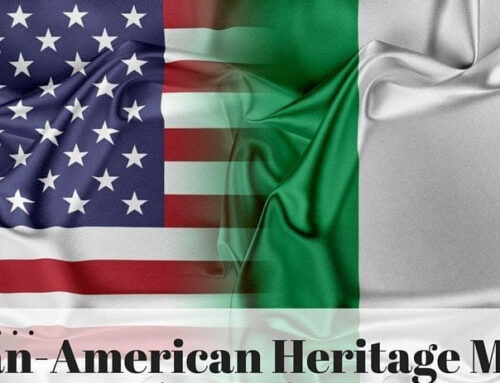Oling, Tulpewihaci, Gokhosing, Machsithanne! Some foreign language? Not at all. These are native American Indian words which Berks County has adopted as place names. Oley, Tulpehocken, Cacoosing, and Maxatawny! To the Indian the first word meant: a place surrounded by hills; the second, the turtle country; the third, the resting place of owls and the fourth meant “the creek with large bends.” The word, Manatawny, recalled to the Indians “the place where we got drunk.”
The Swedes were the first to settle the area. They settled along the Schuylkill several miles above the mouth of the Manatawny Creek in 1701. After a fixed government had been formed by William Penn, the English settlers multiplied very rapidly, and toward the close of the seventeenth century.
The Germans entered the county in 1710, settling along the Manatawny, in what is now Oley Township. Within the first decade a large number came. The first settlement by these people, to the east of the Schuylkill River, proceeded north from Philadelphia; to the west, however, the first colony of Germans, before 1730, entered from the west, proceeding from New York southwardly and from the Susquehanna River eastwardly into the Tulpehocken Valley. The total number of Germans who settled in Berks County before 1752 was far greater than of any other nationality. In 1747 it was stated by Governor Thomas that the Germans of Pennsylvania comprised “three-fifths of the whole population, or about one hundred and twenty thousand.” Many of them were redemptioners, or persons who had bound themselves or one or more of their children to the masters of vessels, upon their arrival, for a term of years, to pay their passage over the ocean. German children of Reading, PA learned to speak English in the German-Catholic parochial school of St. Paul’s R.C. Church.
Below: St. Paul’s R.C. Church, Reading, PA School Class Photo, 1898

While the Swedes settled the east side of the Schuylkill River, the Welsh took the western side of the stream. They migrated through Chester County until they crossed South Mountain, and though some of them reached a point beyond the mountain before the purchase of the territory from the Indians in 1732, the most of them entered this district immediately afterward.
Heidelberg, Berne, Kutztown, Hamburg (Kerchertown), Baumstown, Womelsdorf! These names form from the German and Swiss language. Cumru, Caernavon and Brecknock are names derived from the Welsh tongue. Reading, Windsor, Hereford and others are reminders of the triumph of English speech in Berks, as elsewhere in the United States. Except for a few place names, the Indian and Welsh tongues are forgotten in Berks today.
Settlement by Other Nationalities
Irish
It was fully forty years after Penn had obtained his patent to Pennsylvania on March 4, 1681, before the Irish people came in for settlement. Penn had ever favored the coming of the Germans and seemed to rather slight or snub the Scotch or Irish clans. So it was not until after his death that the Irish came in for any considerable settlement or even to become laborers.
The Irish began arriving in Berks County and Reading, Pennsylvania, in significant numbers during the early 19th century, particularly in the 1820s and 1830s. This was part of a broader wave of Irish immigration to the United States driven by economic hardship, political unrest, and, later, the Great Irish Famine of the 1840s.
Many early Irish immigrants to Berks County and Reading worked on major infrastructure projects, such as the construction of canals and railroads. The Union Canal, which connected Reading to other parts of the state, was a significant source of employment for Irish laborers. They were instrumental in digging and maintaining the canal, often working in harsh and dangerous conditions.
Irish immigrants also played a key role in building the railroads that expanded throughout Berks County. Their contributions were crucial to the region’s industrial growth.
The Great Irish Famine (1845–1852) prompted a large influx of Irish immigrants to the United States, including Berks County. Many Irish families settled in Reading, drawn by job opportunities in factories, ironworks, and other industries.
Over time, the Irish established strong communities in Reading, contributing to the city’s growth and cultural development. They formed social, religious, and political organizations, and many became members of the growing Catholic parishes in the area, such as St. Peter’s Roman Catholic Church, established in Reading in 1752, which grew significantly with the influx of Irish Catholics.
African Americans
African Americans have been present in Berks County and Reading, Pennsylvania, since the 18th century, with their earliest arrivals tied to the broader history of enslavement and subsequent emancipation in the American colonies.
African Americans have been present in Berks County and Reading, Pennsylvania, since the 18th century. Early records indicate that enslaved Africans were brought to the area during the colonial period. For instance, in 1780, Mark Bird, an ironmaster at Hopewell Furnace, was documented as the largest slaveholder in Berks County, owning 14 enslaved individuals.
Pennsylvania’s Act for the Gradual Abolition of Slavery, passed in 1780, initiated a slow decline of slavery in the state. This legislation, the first of its kind in the United States, allowed for the eventual emancipation of enslaved individuals and contributed to the growth of a free African American community in the region.
In 1860, census records show that 497 African Americans resided in Berks County. When African Americans were permitted to enlist in the Union Army in 1863, many from the area joined the fight to uphold the Union cause during the Civil War.
After the Civil War and the abolition of slavery in 1865, African Americans moved to Reading in larger numbers, seeking industrial jobs in factories, steel mills, and other industries. This migration was part of a broader trend during the Reconstruction and early industrialization periods.
During the 20th century, particularly between 1916 and 1970, the Great Migration brought many African Americans from the South to northern cities like Reading. They came in search of better economic opportunities and to escape the oppressive conditions of the Jim Crow South.
Polish
Polish immigrants began arriving in Reading around 1850, seeking work and livelihood in the iron foundries here. The majority were from the area of Poland known as Poznan. Because Poznan was frequently under German control, most residents of the area spoke German as well as Polish.
Slovaks
Around 1880, the first Slovaks came to Reading from Saris, Spis and Zemplin, areas in Czechoslovakia, and later from Trencin, Orava and Nitra, also in Czechoslovakia. There were only a few families, but the number soon increased until in 1894, there were about forty families.
The city’s total foreign-born stock in 1900 was 5,922 (which increased to 7,861 five years later), with almost half of them from Germany. Surprisingly, the next largest group, 1,005, came from Poland, which made Reading the largest Polish population center per capita in the entire state. They were followed by 461 from Ireland, 432 from England and Wales, 353 from Italy, 274 from Russia and the rest from various other countries. The figures for the eastern and southern European countries signaled the start of a whole new era of immigrant for Reading/Berks.
Ukrainians
Around the beginning of the twentieth century, the first Ukrainian immigrants came to Reading from Western Ukraine and from the Southwestern part of the Carpathian mountain region, mainly from Lemko region.
Latinos and Hispanics first began arriving in Reading, Pennsylvania, in significant numbers in 1916, when the Pennsylvania Railroad hired a group of Mexican laborers for a six-month experimental project. These workers were brought from locations along the Mexican border and housed in a camp near what is now First Energy Stadium. Pleased with the results, the railroad extended many of the workers’ contracts and hired additional laborers, growing their Spanish-speaking workforce to about 125 individuals.
By 1918, many of these Mexican laborers transitioned to better opportunities in local industrial plants, such as the Carpenter Steel Corporation. The 1920 United States Census recorded 17 Mexican workers employed at Carpenter and living in a company-provided house on Bern Street. Despite this early presence, mentions of Mexican workers in Reading largely disappeared after 1921, suggesting their employment was temporary. The former camp site later became a baseball field known locally as “Mexican Camp Diamond,” reflecting their legacy in the city’s early history.
A more sustained and significant wave of Latino and Hispanic migration to Reading occurred during the mid-20th century. In the 1940s and 1950s, Puerto Ricans began migrating to the area, primarily to work in agriculture and local factories, as part of a broader pattern of Puerto Rican migration to the mainland United States. In subsequent decades, additional waves of immigrants from Mexico and other parts of Latin America settled in Reading, drawn by economic opportunities and established communities.
By 1970 the total population of Reading was 87,643 with African Americans accounting for 5,744 of the total.
Large-scale immigration from Vietnam to the United States began at the end of the Vietnam War, when the fall of Saigon in 1975 led to the U.S.-sponsored evacuation of an estimated 125,000 Vietnamese refugees.
Today, Hispanic or Latino people of different Spanish-speaking nationalities from Puerto Rico, Mexico, Dominican Republic, Cuban, Columbia, etc. are the largest ethnic group in Reading, PA and in 2019 made up 23% of the Berks County population. The people under the Hispanic/Latino umbrella are different shades of color with hair that is straight or curly, dark or blonde; they live in different parts of the city, where they eat different foods, listen to different music and discuss issues from different viewpoints and ideological perspectives just like the immigrants of Reading and Berks County who came before them.






